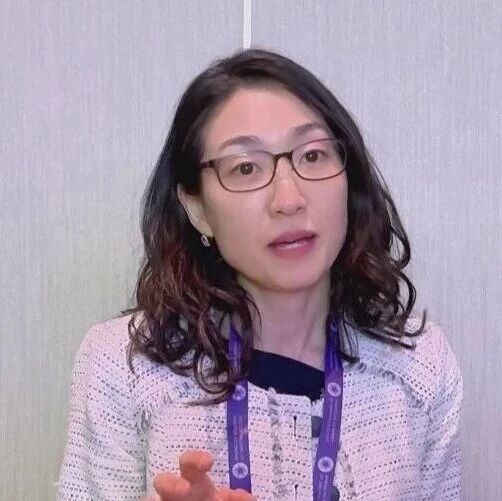编者按:3月3日-6日,2022年美国青光眼年会(AGS 2022)圆满举行,会议上众多国际青光眼专家从多方面探讨了青光眼领域的发展和创新。《国际眼科时讯》有幸邀请到本次AGS会议创新奖获得者——Murray A. Johnstone教授,分享了其工作亮点和对青光眼诊疗技术的未来展望。
专家简介
Murray A. Johnstone 教授
Murray A. Johnstone 教授是华盛顿州西雅图市的眼科医生,隶属于华盛顿大学医学中心。他在华盛顿大学圣路易斯医学院获得医学学位,并从业20多年。Johnstone 教授擅长诊断和治疗眼部疾病,包括视力丧失、视网膜脱落、白内障和青光眼,为眼科患者进行激光视网膜手术、屈光手术和晶状体置换手术。
新概念:泵机制是青光眼新的诊断和治疗的目标
Johnstone教授及其团队已经开发了一系列的实验平台,进行了房水流出调控系统的机理的探索,这是非常令人激动的时刻。Johnstone教授团队使用了很多技术,包括扫描电子显微镜、共聚焦显微镜、示踪剂和一系列其他技术,监测小梁网的功能和形态动态变化。Schlemm管是一个可折叠的腔体,就像入口和出口阀门,通过高分辨率OCT,可以显示小梁网进、出口瓣膜的压力依赖活动调节。
Johnstone教授及其团队将基于相位OCT的研究作为一个特殊的平台,可以定量刻画人类小梁网的活动。该相位OCT技术可发现青光眼患者的小梁网活动异常,有望根据此特征区分正常人群和青光眼患者。
此外,Johnstone教授及其团队还发现了房水流出组织结构是一个组织精美的器官系统,高度统一。
通过将看似不相关的信息与临床研究联系起来(例如裂隙灯和房角镜检查程序,以及组织、细胞和亚细胞水平的实验室研究),能够找到青光眼发病的模式,并解释和预测房水流出。
青光眼引起搏动性的房水流出异常,而治疗青光眼的药物可以恢复房水正常的脉动流。
此后,还需要探索和发现眼睛内部诱导脉动流的机制。Johnstone教授认为青光眼的调节失败是因为组织弹性的丧失,并以Aqueous Outflow Regulation: 21st Century Concepts为题,发表于2021年的Progress in Retinal and Eye Research杂志上,详细探讨了这些最近的发现。总的来说,房水流出调控系统类似一个调节泵,其功能与淋巴系统和体循环相似。青光眼患者的调节泵失效,需要恢复泵功能以治疗青光眼。
It’s been a very exciting time. Our laboratory has developed a series of experimental platforms to explore the behavior of the outflow system, primarily distal to the trabecular meshwork. We have a number of techniques that we use, including scanning electron microscopy. We use confocal microscopy, tracer studies – and a series of other techniques. And what we have discovered is that the trabecular meshwork moves very dynamically.
Schlemm’s canal turns out to be a collapsible chamber with what looks like inlet and outlet valves. With very high-resolution OCT, we can demonstrate pressure dependant motion of the trabecular meshwork in these inlet and outlet valves. We have studies involving phase-based OCT as a special platform now that can quantitate trabecular meshwork motion in humans. This phase OCT technology has found that the trabecular meshwork motion becomes abnormal in glaucoma patients. We can separate normal from glaucoma patients based on that motion. So, we’re very excited about that.
We also find this whole outflow apparatus to be a beautifully organized organ system, highly unified. By connecting what seemingly is disconnected information using clinical studies–for instance, slit lamp, surgical and gonioscopic procedures, and also laboratory studies at the tissue, cellular and sub-cellular level–we are able to find patterns that emerge and explain and predict pulsatile aqueous outflow. Pulsatile aqueous outflow becomes abnormal in glaucoma, and drugs that treat glaucoma.
The outflow drugs that treat glaucoma restore normal pulsatile flow. That is a real clue that we need to be exploring and finding the mechanisms inside the eye that are inducing the pulsatile flow. We have a compressible system of chambers and valves with the trabecular meshwork through the distal pathways experiencing tensile integration. These pathways rapidly change dimensions in response to pressure changes. The pressure-dependent motion synchrony provides a fluid control system able to maintain a homeostatic set point. The regulation fails in glaucoma due to a process we believe involves a loss of tissue elastance.
We had an article just published that I believe you just mentioned, in Progress in Retinal and Eye Research in 2021, titled: “Aqueous Outflow Regulation: 21st Century Concepts,” which explores these recent findings in detail. The summary is that the system is a regulatory pump that functions somewhat like the lymphatic system – much like the systemic circulation. The pump fails in glaucoma. We need procedures that restore the pump function.
在青光眼研究和临床工作中,不断寻找创新灵感
Johnstone教授感慨,他在哈佛医学院做眼科住院医师时,很幸运能和Martin Grant教授一起工作。Martin Grant教授是世界房水外流方面的权威,是一位非常棒的导师——经常提出新的问题让学生思考,并试图让学生始终保持好奇心。Martin Grant教授非常重视经验观察,他曾提出:在科学中,所有的想法都是暂时的,不应该假设任何事情都已经确定了,需要不断地重新审视旧的概念,重新评估现有的工作,并在获得新信息时改变想法。作为一名临床医生,Johnstone教授多年来一直服务于青光眼患者,在此过程中他逐渐意识到,临床工作中需要一个更基本的概念来描述房水流出系统是如何工作的。这也是Johnstone教授多年来从事研究工作的主要动力。
I had my residency in Ophthalmology at Harvard Medical School. I was fortunate enough to work with Doctor Martin Grant, who, at the time, was the foremost authority in the world on aqueous outflow. He was an absolutely wonderful mentor -- always asking new questions, keeping us thinking, and trying to make us curious all the time.
Dr. Grant placed great value on empirical observation. He taught me that in science, all of our ideas are provisional. We should never assume anything is finalized. We need to keep reexamining old concepts, reassess our work, and change our minds as new information becomes available. That, for me, was a wonderful lesson.
As a clinician through the years that I have cared for glaucoma patients, I became very aware that we need a more fundamental idea about what’s going on in the outflow system. That’s my main motivation for pursuing research efforts all these years.
青光眼治疗的未来之路:微创手术和针对房水远端流出系统的新型药物
Johnstone教授指出,微创青光眼手术有很多不同的类型,他的兴趣是Schlemm管和远端流出通道的微创青光眼手术,包括Schelmm管的减压和弹性扩张等微创青光眼靶向手术及房角到Schelemm管的分流手术(如Glaukos装置或小梁切除术等)。此外,各种GATT步骤将套管穿在管道周围,然后将套管拉入房角。Johnstone教授表示,对流出系统的损害较小并改善了房水泵的功能的手术,具有巨大的发展潜力。
多年来,众多研究人员探索了许多不同的概念,对各种微创青光眼手术有很大的兴趣。但在大多数情况下,术后有一个眼压下降的底限,术后眼压在14mmHg到15mmHg之间。研究人员希望将眼内压降低到外静脉压,但目前的手术还不能做到这一点。因此,如果能直接将外静脉压作为目标,将有希望以一种新颖的方式来降低眼压。Johnstone教授认为,本次会议中最有趣的事情之一是由梅奥诊所开发的药物:钾离子通道剂。该制剂的目标是让巩膜外静脉压力降低,促使远端小梁网的房水流出。这种专门针对房水远端流出系统的新型药物将是一个令人兴奋的新选择。
So there are a number of different types of MIGS procedures, as you know. And some of them target the superciliary space. Also, some MIGS shunt aqueous to the subconjunctival space. But I’m not going to talk about those procedures because they are not my area of interest.
My interest is in MIGS that target the Schlemm’s canal and the distal outflow channels. Those SC-targeting procedures include an unroofing of Schelmm’s canal and viscoelastic dilatation with the concurrent passage of cannulas or sutures. Various ab interno procedures include shunts from the AC to Schelemm’s canal, such as the Glaukos devices or TM removal with the Trabectome, Kahook Dual Blade, or bent needles. Additionally, various GATT procedures thread a needle or cannula around the canal and then pull the cannula into the AC to provide communication with the canal.
So, those are the general categories of procedures. As far as the ones I most like – it’s whatever does the least damage to the outflow system and improves the function of the pump mechanism I’ve described.
There are many different concepts we looked at, and there is a great deal of interest in the various MIGS procedures. But with most of them, there is a floor below which the intraocular pressure does not drop. So most of these procedures cause pressures in the 14 to 15 range.
We would like to get IOP to episcleral venous pressure, but our current procedures generally don’t do that. So if we could get episcleral venous pressure targeted directly, I think we would have a much better chance of reducing pressure in a novel way.
I thought one of the more interesting meeting things was the Qlaris Bio Group drug developed at the Mayo Clinic – a potassium channel agent. The agent targets episcleral venous pressure and outflow distal to the trabecular meshwork. In clinical trials, it shows considerable promise. I think the idea of a new novel drug that specifically targets the outflow system distal to the canal is an exciting new option. So, I’m quite excited about that.
总的来说,随着青光眼领域技术的发展,手术方式和治疗药物的不断创新,将不断为临床治疗青光眼提供新的选择,让患者获得更好的视觉质量和手术预后。
参考文献:
【1】Dvorak-Theobald G, Kirk HQ. Aqueous pathways in some cases of glaucoma. Am J Ophthalmol. 1956;41:11-21.
【2】Chi HH, Katzin HM, Teng CC. Primary degeneration in the vicinity of the chamber angle; as an etiologic factor in wide-angle glaucoma. II. Am J Ophthalmol. 1957;43:193-203.
2 comments








 京公网安备 11010502033360号
京公网安备 11010502033360号
条评论
Linda Gareth
2015年3月6日, 下午2:51Donec ipsum diam, pretium maecenas mollis dapibus risus. Nullam tindun pulvinar at interdum eget, suscipit eget felis. Pellentesque est faucibus tincidunt risus id interdum primis orci cubilla gravida.